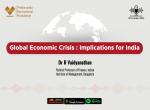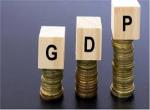Introduction
Indian elite’s desire for big power status grew out of a belief about the Indic civilizational values that spread in the ages of antiquity to what we call North West, South East, East and even West Asia. Most of this proliferation took place from soft power sources like Hinduism carried through the vehicle of trade to these regions; in other times else through the vehicle of Buddhist proselytisers; only rarely through the sword arm of the rulers in an expression of hard power. This has given the country’s elite a sense of exceptionalism that was India’s very own. Eminent historians like Bipan Chandra noted that the Indian struggle for independence based on mass movements was unique in its nature. He wrote in his famous volume, India’s Struggle for Independence the following:
“The Indian national movement, in fact, provides the only historical example of a semi-democratic or a democratic type of political structure being successfully replaced or transformed. It is the only movement where the broadly (Antonio) Gramscian theoretical perspective of a war of position was successfully practiced, where State power was not seized in a single historic moment of revolution, but through prolonged popular struggle on a moral, political and ideological level….”
This broadly Gandhian freedom movement1 had only added grist to the mill of the ‘exceptionalist’ group. As a result, when the British colonialists left India after denuding of almost all resources, India still was a leader amongst the post-colonial nations, solely based on what Bipan Chandra would have liked to call as Jawaharlal Nehru’s ‘moral’ dispensation. Notwithstanding the likes of John Foster Dulles who found ‘Non Alignment’ to be immoral, in reality it was far bigger than the US armed invasions of Korea and the like.
But with time, as India’s economy improved adding value to the rather chimerical a measure of economic development, the gross domestic product (GDP), the Indian population turned increasingly ‘realist’ in strategic terms, with the profit motive being the primary source of their aspirational desires. 2 This also caused the Indian State to count on the fact of higher and higher appropriation of national resources for the armed forces, including the police forces at both the central and state level. 3
These developments also added to the idea of ‘comprehensive national power’ (CNP) – a Chinese term – that can be deployed in terms of national crises. This CNP was meant to be brought to bear in cases of foreign aggression, both in traditional and non-traditional methods. Having said that most of this is still in the realm of theoretic exploration of a modernising State.
Path of Progress
In 1960, the urban population as a per cent of the total population was about 18 per cent. This steadily rose to 33 per cent in 2015. In other words, 67 per cent of the population is still rural. Compare the figure with China, in the same time-scale, the population of the nation was 16.2 per cent in 1960 while it has risen sharply to almost 57 per cent by 2015. At constant 2010 dollar terms, China’s per capita GDP was in the negative territory to the extent of 26 per cent in 1961, while India’s was 1.7 per cent in black ink. But when in 2016 both, the Chinese economic growth slowed down to about 6 per cent and the Indian story notched up a rate of 5.8 per cent, the graphs converged.
The Chinese ‘Reforms and Opening Up’ under Deng Xiaoping really began to produce results consistently from the mid-1980’s and continued through to the 2000’s on the back of high exports. In the case of India, during the few Rajiv Gandhi years, showed growth of about 7-plus per cent only in one year 1988, but at a high cost of heightened short term loans through market borrowings. The ‘economic reforms’ programme initiated in 1991 showed a lag and began to rise on a moderate growth path of about 7 per cent from the year 2007 of the United Progressive Alliance (UPA)-I rule. This dipped by a couple of points during the 2008 financial melt-down. But India’s economic growth rose again between 2009 till 2015, till it dipped a tad in 2016. Since both the countries were at the similar level of socio-economic development, when a stable domestic leadership took power - in case of India in 1947 or in real terms,1950, and China in 1949 – clearly China has now marched ahead of the country in these terms too. 4
Be that as it may, the policies of both the nation-states still have to be geared towards the rural population since a vast number of them live there. Prime Minister Narendra Modi’s government too have given importance two important aspects: rural roads and electrification.
In terms of the quality of growth, however, China is much ahead of India. This essentially means the factor of redistribution of income to the poorest sections of the people is much higher in China than that of India. The World Bank table on percentage of population below the level of $1.90 per day shows data of the countries till 2013. In China’s case 1.3 per cent of the people earn less than the Bank monitored level. India’s numbers are obviously much higher. But since UPA-II’s mid-term, no reliable poverty data has been generated that can be taken as a measure of distributive justice. 5
Geo-strategic Goals
India’s geo-strategy is evolving still. While it is searching for a handle over the Indian sub-continent as its pre-eminent power, it still appears uncertain whether it can maintain its position untrammeled. All the other smaller nations fear having a ‘big brother’ in the neighbourhood. Hence, they seek an equivalence of sorts, by opening other fronts like Sri Lanka, Nepal, Bangladesh and of course, Pakistan who keep their channels of involvement open to the West – more out of habit as it being former colonial rulers – and now, China.
Unevenness of development in India – economic, social and cultural – is such that a dispassionate observer would barely see the odd islands of modernism in a sea of pre-modern societies. This is the most important cause of India being held back from achieving what its elite believe is its métier.
What are the causes of this situation developing? The first reason devolves upon the ruling class of the country – bureaucratic, political and even military – the same lot who dream ‘big.’ On another plane exists the Constitutional goals of ‘socialist, secular, democratic republic.’ Our delivery systems of public goods and services are so mired in corruption – bureaucratic, political and military (though this still remains the most credible institution of the country) – that China forged passed us by the end of the 1980’s as has been seen in the previous section.6
Beijing’s breath on the neck of the country – in real terms as in Siliguri Corridor, which also is called the eastern Chicken’s Neck – has made New Delhi to get closer to Washington. Understanding the limitations of its own reach into the Asian continent, the USA too is seeking to develop a closer relation with India, as a sort of a local sheriff, who will watch over common interests in what has been dubbed the ‘Indo-Pacific’ region.
Before India can fully take on that role, the country needs to fix the domestic systems. The biggest problem the country faces is corruption that devalues any regime which comes to power in the eye of the people. Besides these rent seekers misappropriate the resources that were to be distributed amongst the people in need. Media attention naturally amplifies the problem, though it must be said that one prime minister who had talked about 10 paisa of the development rupee reaching the people on the ground, had himself flamed out on the issue of commissions drawn for an artillery gun purchase.
Prime Minister Narendra Modi promised ‘clean governance’ and his evocative notion of ‘Swachh Bharat’ could easily have meant to end corruption through transparency and accountability. But how much he is successful in his mission will be known when there is impartial audit of the performance of his government – if at all possible at the end of his five year term. In geo-political terms his efforts translating into action – the approach seems to have been to eradicate most malpractices by systemic changes like demonetisation and tracing the offshored monies – is extremely important. Because from the beginning he has sought to project himself as a strong man, he is being watched closely by not just the nations of the neighbourhood but the faraway friends of India too.
In terms of India’s evolving geo-strategy, the maritime opportunities of limited projection of power has become evidently important. Scenario wise, the strategy of its Big Power engagement cannot be a zero sum game. Hence, its tactic of cooperation and competition with China will need to continue. Even as the US pushes for a quadrilateral relationship tying up with Japan and Australia besides India, the latter should remember the disaster of World War-II Japanese proposal of ‘Asian Co-prosperity Sphere’ or ‘Greater East Asian Co-prosperity Sphere’ – a thinly veiled attempt at extending Japanese imperialism in the continent. Thus the ‘correlation of forces’ or ‘balance of power’ to be maintained in Asia devolves a greater responsibility on India and demands from it to be the fulcrum. It has to firm up its own position by which it becomes the factor that tilts the scale one way or the other. Choosing the sides becomes important in these times of transition when the world is being challenged to bestow itself an order that would define the century.
The last world order that was established following the World War-II survived less than a hundred years; and is up either for renewal, and failing which, replacement. Chinese under Xi Jinping are making a serious effort at creating one, where they will truly be in the middle of a concentric circle of influence.7 This is despite the exhortations of their leader who kicked off what is being considered the second Chinese Revolution, Deng Xiaoping. Deng, in his famous 24 character commandment had said, "Observe calmly; secure our position; cope with affairs calmly; hide our capacities and bide our time; be good at maintaining a low profile; and never claim leadership."8 Xi’s China wants not only to claim leadership but proliferate its form of governance as a global model of ‘best practices.’ By the same token Russia’s strongman Vladimir Putin wishes his own sense of a world order where it plays a key role in a post-communist fashion. India needs to be in a position to choose either side of spectrum, and be the decisive leader in either. Indeed it had become a balancing factor with the non-alignment mantra that went deep into the heart of the post-colonial nations as they were being born.
India’s other preference for ‘strategic autonomy’ segues into the model very well. For maintaining that space, its Big Power engagement strategy has to be fine tuned by which none of them can take umbrage. More specifically, Deng’s words coupled with a definite idea of avoiding the Thucydides Trap possibly remains less limiting than the Chanakyan adage of “Enemies enemy is a friend” as a homegrown wisdom.
Roadblocks
When CNP is understood to be a potent mix of economic and political power, social integration and military prowess, it does go beyond the traditional thought of solely instrumentalising international relations on the basis of the military teeth. For example, the problem lies in the processes of industrial development in the country. In that the biggest logjam is in terms of infrastructure. Over the last 70 years we have spent what are scarce resources, to the extent of a few lakh crore of rupees or a few thousand billion dollars, but have not been able to generate electrical power or enough carriage capacity or even roads to bear large volumes of cargo though road transport as the cheapest mode of carriage. Much of this money has vanished as loot into individual pockets lined up for precisely that.
When we launched the economic reform programme, two simultaneous developments took place. The first was the fire sale of public sector units irrespective of their profitability, in a way that Russia witnessed after the fall of the USSR. Second was the desire to create positive results to match the electoral cycles, that the pain of economic reorientation was apportioned to those who were disenfranchised, suffering privation, and also completely voiceless. The pleasure principle worked in favour of the middle classes that had been reared, ironically, on the money of a mixed economy, when most of the State assets created more jobs per unit of capital than the small but favoured private sector. To neutralise the effect of marketisation of the economy, the system needed regulatory mechanisms to be created at the earliest. Contrarily, the public sector shares scam and the stock market scams took place. This eviscerated the small investors who could have been the back-bone of the asset values of the market.
To create a quick pathway for the ‘fruits’ of economic reform available to the marginally advanced middle classes and to bypass the problem of the lack of infrastructure, the service sector was given the choice of being the primary driver of economic growth. Fortuitously, the Y2K problem came up and a minor tweaking of the operating systems of the cyber world was needed. This led to the information technology enabled services (ITES) boom – the call centre story. Simultaneously began the low end software design like keeping attendance records and financial accounting processes. This began the software boom, with concurrent impact on the education sector, and thus an emphasis on the English language training.
Then followed the real estate bubbles which were fuelled by comparatively easy money, i.e. institutional and non-institutional credit. While those satisfied the natural aspirations of the middle classes for dwellings, they became enclaves surrounded by shanty towns of those who were displaced from their rural homesteads as internally displaced people with an economic refugee status. On top of that was the real estate development business, first in mostly the unorganised sector and some of the big corporates who came into the game at the high end of the market. They really gave rise to the inflow of Non-Resident Indian (NRI) money that went into speculation based on the rising market. Post-2008 financial crash, this speculative investments became what is ‘unsold stock,’ and which contributed to the ‘bubble bust’.
An unofficial ‘exit’ strategy was allowed to the technologically obsolescent private sector owned by those captains of capital who had milked it dry in a ‘controlled’ economy, for legitimate and illegitimate wealth generation. The domestic media pundits, most weaned on family incomes earned from the fixed-tenure public sector jobs, became such votaries of market-driven economic development that the symbol of closed economy became the humble ‘Trabant’ car of East Germany, focused upon first by the anti-left, international media. But the domestic pundits here failed to account for the ‘Ambassador’ car that was a classic example of how protected the private industry was by the successive governments. The engine and the mould of the car had not been changed for about four decades till a classic small car of Japanese-make came into the market; that’s another story for another day. But it remains a fact that barring in the exploitation of natural resources sector, industries, either domestic or of foreign origin, did not take root as easily as they did in China for two entirely different reasons. The former failed to be efficient producers despite artificially depressed wages; and the latter because of the absence of infrastructure like electricity generation, poor roads and over-burdened railways.
Manufacturing, thus shared space with agriculture in the lower bottom of the composition of gross domestic product. The results of de-industrialisation that is now felt in the Western economies is not a formula that this country would have had to follow. Western manufacturing jobs were lost to low wage nations like China, and even some of the so-called ‘Asian Tigers.’ But India too was in the same category. While the prized FDI inflow was a trickle, the country even suffered from skills deficits – some of the people required retraining and some others, new skills. The Indian Institutes of Technology (IIT) and Indian Institutes of Management (IIM) though produced technically qualified professionals, who preferred to add to the GDP of the rich West than the home country where they had had subsidised education. This takes us to the issue of solidity of the Indian economic growth. For the key income generator of the rural population, which is still – after 30 years of reform – bigger than the city dwellers, remains agriculture. And there was little or zero reforms in this crucial sector. It also suffered from a lack of fresh investments.
To be clear, the terms of trade between agriculture and industry remained adverse for farm sector right from the beginning of the economic reform programme.9 A major contributor to this is the tapering off the ‘Green Revolution’. Though movement of labour and capital did not flow out of the sector at a similar level as that of China, there was still some movement that had deleterious effect on the middle peasantry, especially even as their small savings were depleted by various Ponzi schemes which proliferated due to absence of any regulatory or advisory mechanism of the State. As a result the pace of industrialisation slowed, the expected concomitant urbanisation was small, and farmer’s suicide rate, that can only remain as blot on the larger society, continued to rise.
These barriers to the growth of CNP thus cried for attention.
Conclusion
Quite to the contrary of the National Democratic Alliance (NDA)-I regime that seemed to be a part of what can be called the ancien regime, the NDA-II came to power with a certain mission-mode readiness. Some of the targets they set were composite in character. However, they were of course not trying to change the class character of the Indian society.
Some illustrations are necessary for one to explicate the NDA-II phenomenon. It focused at the micro level on creating connectivity, roads mostly, from the viewpoint of facilitating trade – both intra-national and international. And it talked about hundred per cent electrification. The resource allocations were connected to the tenure of the regime and the targets were achievable. At the macro level, ironically, despite the nominally right wing coalition, it remains decided to have inspection of especially the urban sector – they also went for fiscal consolidation. Thus despite the issues related to the dominant West undergoing drastic meltdown, the country’s current account deficit remained at a low level; while the foreign exchange reserve remained on a higher plane.
Finally, there was an intense focus on giving fillip to the degraded yet important sectors of the economy – as has been reflected in the previous sections – by re-capitalising Public Sector Undertaking (PSU) Banks after a write-down of the non-performing assets accumulated over decades; directly transferring resources to those at the bottom of the pyramid; and seeking to increase the pace generally of economic reform programme.
This brings to bear the first research question of how to become a Big Power – on an exceptionalist basis. The path is long and tortuous; but the country is readying itself for its place at the global altar for some time now. The time window for achieving its goal is fast shrinking.
Endnotes
1. Broadly Gandhian independence movement essentially implies that the country also had a large groups of revolutionaries who did not ascribe to the non-violent method of MK Gandhi. They equally had an immeasurable impact on the British colonialists.
2. When this aspirational profit motive becomes the driving force of a society, it turns to what Karl Marx called product fetishism. This is quite in contrast of the spiritual abnegation that marked the history of Bharat – from the antiquarian times to a Gandhi to a Sundarlal Bahuguna. While it is debatable whether self abnegation can quite contribute to the material growth of the larger population of a nation-state, but it certainly helps in terms of emancipatory ‘Dharma’ which can dictate life. While ‘dharma’ is not religious but universally social in understanding, the closest Quranic word is the Arabic etymology of ‘ijtihad.’
3. A post-Westphalian modern nation-state needs a ready sword arm; in comparison to the other comparative societies of the West and East the forces are much smaller per capita. Some experts in the country argue that the ratio of the police force with respect to the whole population is too small for maintenance of order and upholding the writ of the law, but the fall-out of the militarisation of civil police is now being witnessed in the USA, for one.
4. All data have been sourced from the World Bank.
5. Dr. Manmohan Singh’s first UPA-I government undertook a solitary intervention in terms of addressing endemic poverty in the country called MGNREGA (Mahatma Gandhi National Rural Employment Guarantee Programme). The issue was born out of a plan by the Left Front that supported the government from outside. For form’s sake the idea was fleshed out by the National Advisory Committee (NAC) chaired by Mrs. Indira Gandhi. The confusion however was on account of the poverty count that created widespread conflict, within and outside. All this is well documented in news publications’ columns, and a few scholarly treatises. Read Suresh Tendulkar, Abhijit Sen, Surjit Bhalla et al.
6. China, like any other country of the world, also suffers from the problem of large degree of corruption. But ever since the demise of the Soviet Union, the unitary Party-State has grown a fear of popular revolt (they call it social instability) that they have had to deliver some of the public assets to the people. That, and what former president of China created a notion of ‘China Dream’, was shared by all, creating equivalence across classes. The concept of ‘class’ in a supposedly communist country creates a problem about the Marxist Thought. But the recent 19th Communist Party of China (CPC) Congress has created the ‘two stage’ development plan which in some way ameliorates the idea of an evident class system.
7. The 19th CPC Congress held extensive discussions on the world order and even pitches for a model of governance that revives memories Beijing Consensus, as reported by Xinhua, South China Morning Post etc.
8. 8 Vogel, Ezra, Deng Xiaoping: Transformation of China
9. World Bank Country Reports, ironically contributed by the likes of Ashok Gulati, Kaushik Basu and Ors.
(Pinaki Bhattacharya is strategic security researcher and analyst.)
(Views expressed are of the author and do not necessarily reflect the views of the VIF)
Image Source: http://www.rednewswire.com/india-to-be-6-trillion-economy-buy-stocks-to-capture-that-growth/









Sir your article is knowledgeable and they way you have interlinked the points is a key strength which engaged the reader. Thank you.
Post new comment